About ALLEGRO ‘Agile ultra low energy secure networks’
 ALLEGRO aims at designing and validating a novel end-to-end sliceable, reliable, and secure architecture for next-generation optical networks, achieving high transmission/switching capacity
ALLEGRO aims at designing and validating a novel end-to-end sliceable, reliable, and secure architecture for next-generation optical networks, achieving high transmission/switching capacity
- with 10 Tb/s for optoelectronic devices and 1 Pbt/s for optical fiber systems
- low power consumption/cost
- with > 25% savings
- and secure infrastructures and data transfers.
The architecture relies on key enabling innovations:
- smart, coherent transceivers exploiting multi-band & multi-fiber technologies for P2P and P2MP applications, based on e.g., high-speed plasmonic modulators/photodetectors and programmable silicon photonic integrated waveguide meshes;
- loss-less, energy-efficient transparent photonic integrated optical switches, eliminating OEO conversions, e.g., with on-chip amplification in the O-band for datacom applications;
- a consistent approach to security, in terms of functional/ protocol architectures and communications, further improving QKD systems, enabling optical channel co-existence and researching on quantum-resistant (post-quantum) cryptography, developing systems based on physically unclonable functions; and
- a scalable AI/ML assisted control and orchestration system, responsible for autonomous networking, dynamic and constrained service provisioning, function placement and resource allocation, leveraging devices increasing programmability and overall network softwarization.
To achieve the target objectives and KPIs, ALLEGRO has defined a clear methodology ending in ambitious demonstrators. The consortium includes a good balance of industry and research/academia with know-how in complementary fields.
The results of ALLEGRO will be disseminated in leading conferences, events, and high-impact journals. They will have a concrete and measurable economic and social impact, contributing towards achieving key European objectives, reinforcing European leadership and digital sovereignty in the ongoing digital and green transition.
Project News
Advancing Power-Efficient E2E Transport Infrastructure
In the ALLEGRO project we are pioneering next-generation flexible transceivers (TRXs) to optimize optical communication networks. A key aspect of our work is the back-to-back (B2B) characterization of coherent TRXs, enabling precise assessment of light-path GSNR...
Optimizing Optical Amplifiers for Multi-Band Transmission
As optical networks scale beyond the C+L bands, the role of optical amplifiers (OAs) becomes increasingly critical. While Erbium-Doped Fiber Amplifiers (EDFAs) remain the go-to solution for C and L bands, extending amplification further requires new rare-earth...
Exploring the Impact of MB Loss Profile and SRS on GSNR
In our latest study, we dive deep into the effects of Stimulated Raman Scattering (SRS) on multi-band optical transport. Looking we analyze the GSNR and its OSNR and SNR_NL components for a 70 km scenario, revealing key insights: 🔹 Without SRS (dot-dashed curves), the...
Optical Transport Digital Model in PHY-DT
In optical networking, the transport system consists of transparent WDM light paths (LPs) that need to be optimized across the network topology. A key challenge in modeling these paths is accounting for signal impairments caused by nonlinear fiber effects, amplified...
Physical Layer Digital Twin in Optical Transport
In optical networking, the physical layer (PHY) is the foundation—comprising network elements (NEs) and devices that enable transparent optical circuits. To optimize performance, we need a Digital Twin (DT) that accurately models the impact of each NE on the...
Digital Twin & Modeling in Optical Networks
The Digital Twin (DT) concept, first introduced by NASA, has evolved into a powerful tool across various industries. In essence, a DT is a virtual replica of a physical system, using real-time data and simulations to optimize performance and decision-making. 🔹 Why...
Complexity Reduction of Neural Networks Using Multi-Task Learning (MTL)
As long-haul coherent-detection DWDM optical transmission systems push the limits of spectral and power efficiency, developing energy-efficient NN-based nonlinear equalizers (NLEs) is critical. One promising approach? Multi-Task Learning (MTL). 🔹 What is MTL?MTL...
Evaluating the Benefits of Computational Complexity Reduction in Neural Networks
In our latest study, we explore the impact of computational complexity (CC) reduction in NN-based nonlinear equalizers (NLEs) for optical communication. Using a numerically simulated single-carrier 64-QAM 30 GBd dual-polarization channel over 20×50 km of SSMF, we...
Complexity Reduction in Neural Network Equalizers
Optimizing computational complexity (CC) is key to deploying efficient NN equalizers on resource-constrained hardware. To achieve this, we focus on three key areas: (i) training, (ii) inference, and (iii) hardware synthesis. 🔹 Training EfficiencyReducing CC in...
Optimizing Optical & Digital Signal Processing for Multi-Core Fibres & Optical MIMO in SDM-PON
As demand for high-speed data transmission grows, energy efficiency in optical communication systems is more critical than ever. In the ALLEGRO project, we are exploring advanced DSP techniques to optimize performance while minimizing power consumption. 🔍 Key...
